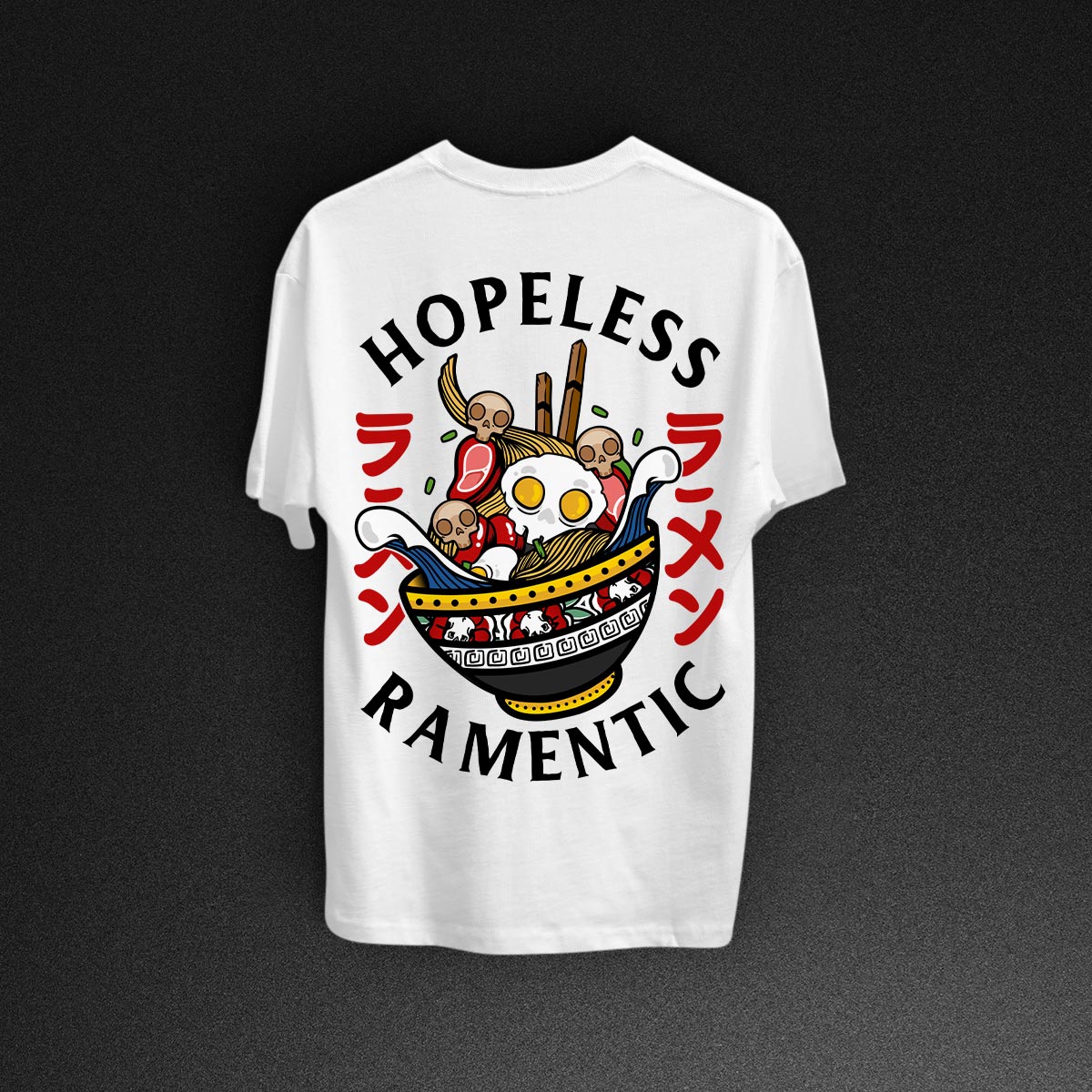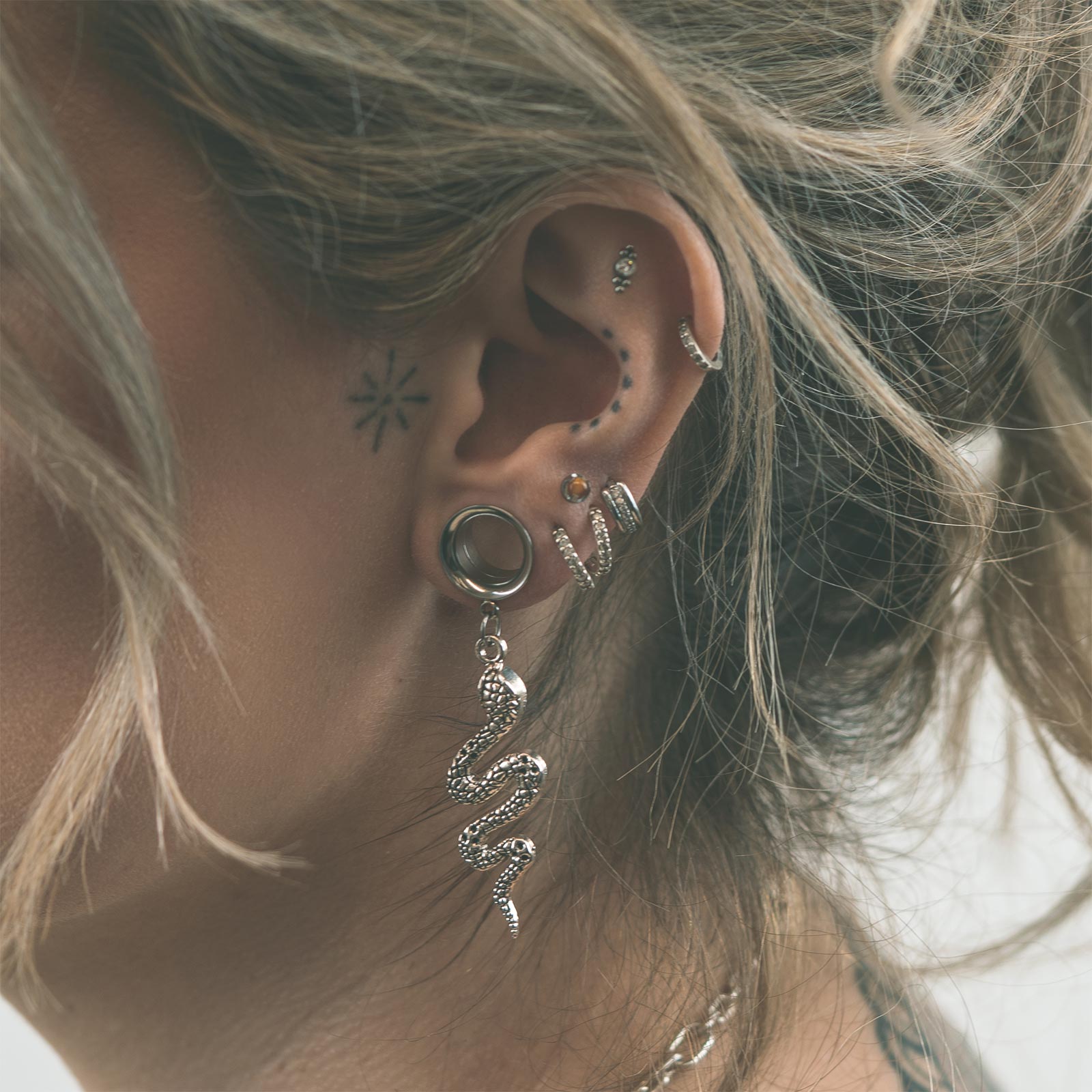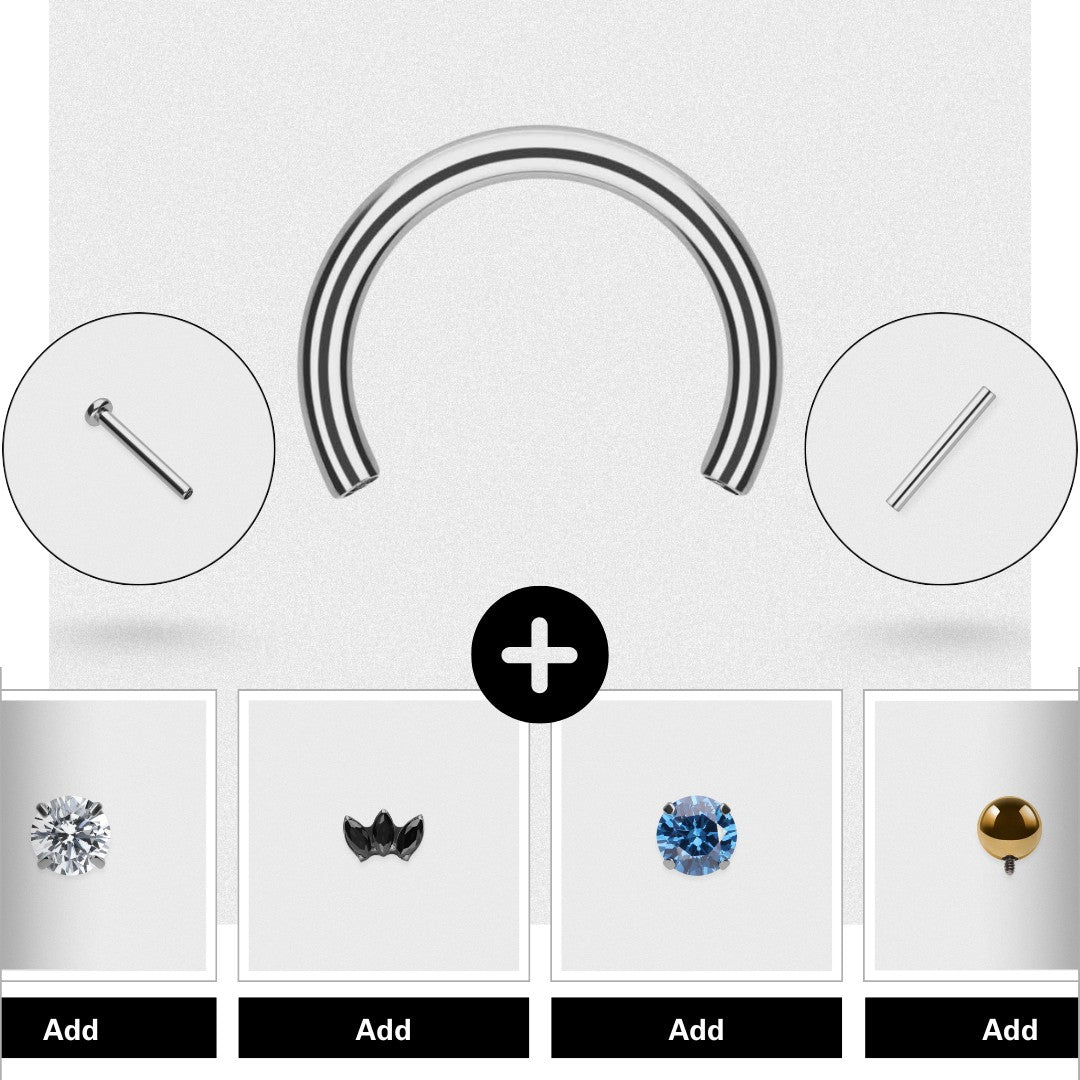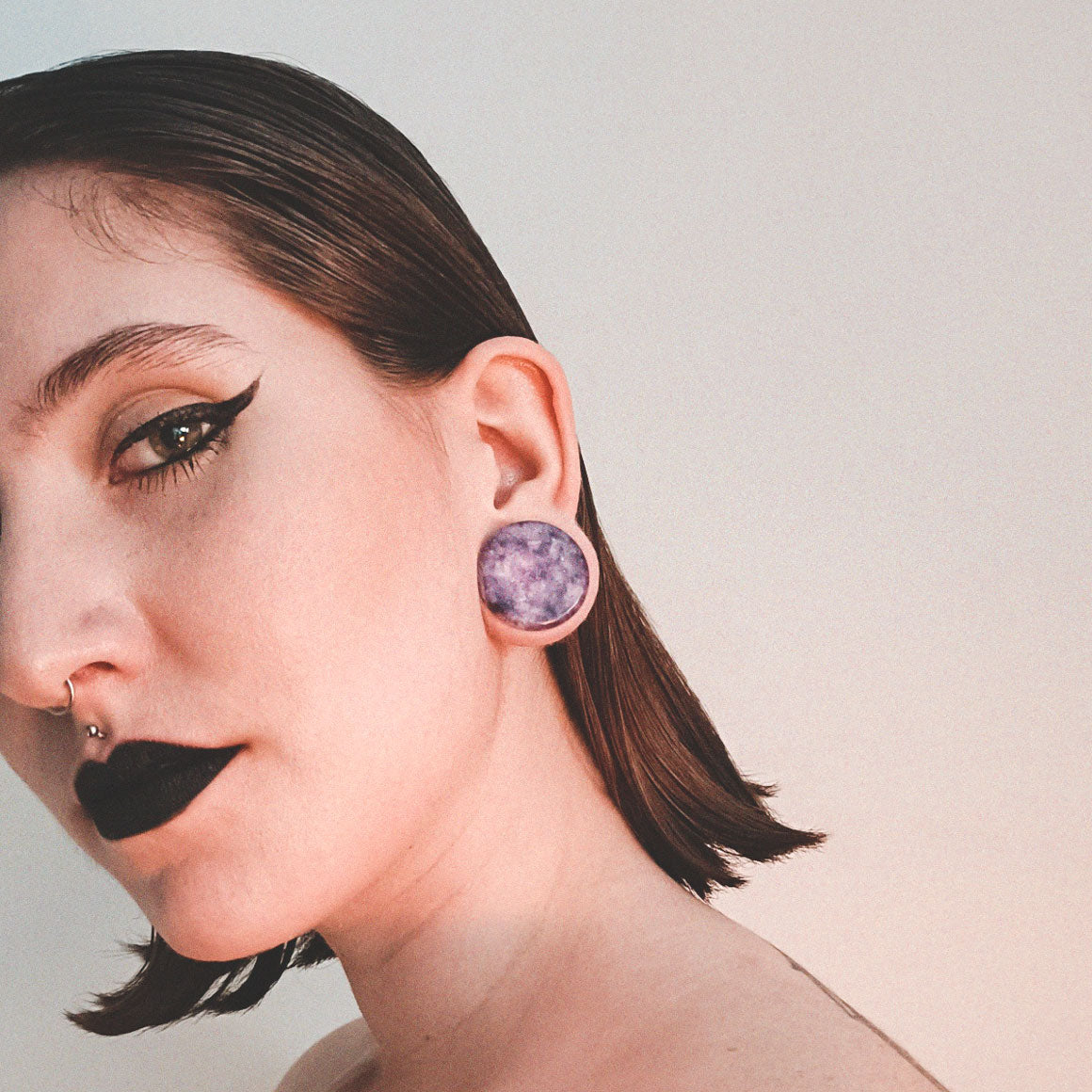"A new nasal piercing needs TLC, and your nose stud or ring is no exception. Regular cleaning keeps debris out and infection at bay. But aftercare goes beyond just cleaning. You need to keep your piercing and your jewellery in tip-top condition to avoid future problems."
Discussed In This Post
So, you’re rocking your new nose piercing. That tiny bit of metal takes your look to a new dimension of killer. But there’s just one tiny catch… even the most epic nasal piercing can get a bit cranky sometimes.
But, don't freak out! In this article, we’re running through all the need-to-know stuff about nose infections from nose piercings, including:
- Preventing infection, (preferable to curing it!)
- Looking after your nose piercing
- Getting your pierced nose back to happy (and stylish) if something goes pear-shaped
Let’s hit it!
Why We Love a Nose Piercing (and Why It Sometimes Freaks Out)

Nostril piercing is the second most popular piercing after ears. It comes in two main styles:
Both are awesome. But truthfully, there's always a chance of infection or rejection with any piercing. Bummer, we know.
The good news? You can give your sparkly new nose piercing the best start in life by carefully choosing a good nose ring or stud.
Picking Out the Perfect Jewellery for Style and Safety
It’s exciting to pick out nose rings and studs to express your unique style. But where do you start? And what’s going to help you be safe, not sorry?
As you’re already aware, nose piercing jewellery comes in two main flavours. The question is, which one floats your boat – a nose stud or a nostril piercing ring?
- Nose rings – Easy wear and easy care, nose rings take the crown for most popular nose jewellery, and for good reason. For a start, there’s a treasure trove of styles to suit your unique vibe. Nose rings have got you covered, whether you crave a dainty gold nose ring, or prefer to make a statement with a bold titanium hoop.
In addition, you can find your favourite styles in ascending gauge sizes. They typically range from a barely-there 0.8mm to a more substantial 1.6mm, with diameters varying from 6mm to 12mm. So, you can find the ideal size nose ring to hug your nostril comfortably.
- Nose studs - A nose stud is as subtle and elegant as a whisper, or as bold and expressive as a roar. And variety is the spice of life, after all. And you’re in for a treat, with mind-blowing selections of nose studs to choose from, in all sorts of materials, sizes, designs, and styles.
Honestly, there’s a nose stud of your dreams for everyone, whether you’re a nose piercing virgin or a total piercing pro. Classic nose bones. Secure nose screws. Ever-reliable L-shaped studs. It’s your call to find the one – or several - to complement your anatomy and personal style.
But with all these choices, there's one material that stands out for brave newbies and old hands alike - titanium. So, it’s no surprise a market leader like SIBJ offers a brilliant selection of high-quality titanium nose rings and studs, ensuring your piercing looks and feels fantastic.
Aftercare Essentials to Keep Your Nose Bling Happy
A new nasal piercing needs TLC, and your nose stud or ring is no exception. Regular cleaning keeps debris out and infection at bay. But aftercare goes beyond just cleaning. You need to keep your piercing and your jewellery in tip-top condition to avoid future problems.
So, consider this. It’s quick and easy to get a nostril piercing. But healing takes a few weeks, sometimes even months. In the first few days, your pierced nose might be a bit red, inflamed, even sore. But don't worry. It’s normal.
Here's what to do to keep the nasties at arm’s length:
Keep it clean
Many professional piercers recommend a saline solution, which you should use twice a day. You can also try a DIY sea salt soak or a diluted tea tree oil solution if your nose feels extra tender. But, the SIBJ pros swear by LobeLove™ Professional Saline Piercing Spray.

This isn't your average saline solution. It's formulated for professional-grade cleaning. And it’s completely free of preservatives and harsh alcohols that can irritate your piercing. Better still, it comes in a super convenient travel-friendly spray bottle. So, you can keep your piercing clean and happy on the go. A quick mist is all it takes to gently flush away any dirt or debris trying to crash the party.
Let it be
Let it be - Changing your nose rings and studs too soon can lead to infection and even cause the hole to close. Patience is key, my friend!

Get your filthy hands off!
Don't touch your nose piercing unless you're cleaning it with freshly washed hands. Remember, germs are the enemy here.

Listen to alarm bells
An untreated infection can lead to serious problems, such as breathing difficulties and a change in the shape of your nose. OMG! The moral of this story is don’t bury your head in the sand – literally or figuratively – if something doesn’t seem right.

All fundamental advice. But let’s take a closer look at how to clean for ultimate nasal piercing triumph.
How Exactly Do I Clean My Nose Piercing?
Every body and every pierced nose is different. As a result, it can take up to two to four months on average for a nostril piercing to fully heal. You won't need to clean it as often once it has. But occasional cleaning is still essential to prevent infection and scarring.
Here's what you need for cleaning:
- A professional saline rinse like LobeLove™ takes the cake. Or you can try a DIY sea salt soak by mixing a pinch of sea salt with warm water.
- Cotton balls or thick cotton or linen cloths (But bear in mind cotton wool and thin cloths can snag on your nose rings and studs!)
Simply dip your cotton ball or cloth in the solution and gently clean your pierced nose. And this sounds really silly, but you can also submerge your nose in a cup or bowlful of solution for a soak.
Don't Forget About Your Nose Studs and Rings!

Cleaning your nose ring or stud is just as important as cleaning your nose piercing itself. In fact, keeping your jewellery pristine is essential for removing any oil, dirt, or debris that might be lurking. You're basically rinsing away potential infection-causing bacteria.
For a new nasal piercing, clean the jewellery around and under the stud during your regular cleaning routine. Once healed and you start switching to different jewellery styles, it’s fine to clean your jewellery when you’re cleaning your nostril piercing. This can be with a saline solution or just regular soap and water.
FYI Silver jewellery will need an occasional clean with a professional silver cleaner to get rid of any corrosion that could irritate your pierced nose.
What Not to Do
Knowing what not to do is just as important as knowing and doing the right things. So, let’s run through a short but important list of no-no’s for happy piercings:
- Ditch the antiseptic - Over-the-counter stuff like Germoline, Savlon and Sudocrem can hinder healing. It can be tempting if you suspect an infection. But stick with saline rinses and seek professional advice if there’s no improvement.
- Hard pass on hydrogen peroxide - It’s known for its effectiveness against bacteria and viruses. But it will irritate your nose piercing like nobody's business.
- It’s no game - Don't play with and twist your nose ring or stud. It can aggravate your nasal piercing and even slow healing.
- Clean hands, happy pierced nose - Touching your nostril piercing with dirty fingers is a recipe for infection.
- Sharing isn’t caring - Never share nose rings and studs with others. It's a surefire way to spread bacteria.
- The force isn’t with you - Don't force it if your jewellery isn't going in smoothly. Instead, gently insert it in a clockwise motion until it’s sitting comfortably.
- Metal matters - Opt for high-quality nose studs and rings to avoid allergic reactions and skin sensitivities. We’ve said it before and we’ll say it again – titanium. Also look for surgical grade steel and gold. And here’s a thought if you’re thinking about cutting corners with cheap and uncheerful jewellery. It’s more likely to break in your nose, which can lead to swallowing or inhalation without knowing – not cool!
All in all, it’s reassuring to know what you should be doing, not doing, and how to spot any warning signs. But how can you avoid pressing the panic button too soon?
Is It Infected or Just Healing?

Some mild soreness, redness, and crusting are totally normal. These symptoms should disappear in a few days with proper care. But can you really tell if it's an infection or just your nose piercing healing? Here are some red flags to watch out for:
- Heat - It’s not a good sign if the area around your nasal piercing feels hot to the touch.
- Pain - A little tenderness is to be expected. But it shouldn’t get much worse than that.
- Pus - Clear fluid is ok. But thick yellow pus is a major sign of infection.
- Redness - This is normal at first. But it could be a sign of infection if it worsens and / or spreads.
- Swelling - Some swelling is fine. But it’s perhaps best to see your GP or the nurse at your local surgery if it gets excessive or doesn't improve.
And here’s a real kicker. Fever doesn't usually accompany a mild infection. If you have one, seek immediate medical attention – it might be serious!
That’s infection covered. But what about allergies?
Itchy and Red? Maybe It's an Allergy
An allergy to the metal in your nose stud or ring might be the guilty culprit behind any redness and irritation. In fact, allergic reactions to nostril piercing can be more common than infections. But how are you supposed to know the difference?
Unlike infections, allergies tend to be itchy and look like a rash, with small red bumps around the nose piercing.
And now you know what you might be up against, the next question is how to tame the beast.
How to Treat a Nose Infection from Nose Piercing

Simples! You pretty much keep on with a good solid aftercare routine. Additionally, there are a couple of other steps you can take if you suspect an infection, including:
- Chill out - A cold compress can help reduce inflammation.
- Pain relief - Take an anti-inflammatory like ibuprofen to reduce pain and redness. Make sure to follow the instruction leaflet carefully or ask a pharmacist for advice if you’re going down the painkiller route.
And if all else fails, it’s time to get a healthcare professional involved.
When to Call the Doctor
See your GP if your symptoms worsen or don't improve with home treatment. After all, early intervention is key to avoiding more serious complications further down the line, which can include:
- Scarring - This can occur around the nasal piercing or leave an enlarged hole.
- Infection spread – Scaremongering aside, infection can spread to other areas of your face or even your bloodstream in rare cases.
Don't panic though. Your GP can prescribe oral antibiotics to clear up the infection. Moreover, they can also diagnose if you’re suffering with an infection or an allergy. If it's an allergy, the remedy should be as easy as switching to high-quality nose rings and studs.
Voila! All it takes is TLC and this Stretch It Body Jewellery guide to pre and post nose piercing care.
Now, it's time to deck it out with some seriously stellar jewellery, from titanium nose studs that won't irritate your skin, to endless nose ring options for a bold statement. And don’t forget to grab a bottle of amazing LobeLove™ spray for a blissful nasal piercing. Head over to our website and explore the collection. Your perfectly pierced future awaits there.
Subscribe To Our Awesome Mailer
No spam. Just discounts, exclusive promotions and ear stretching tips & tricks you won't want to miss.






















